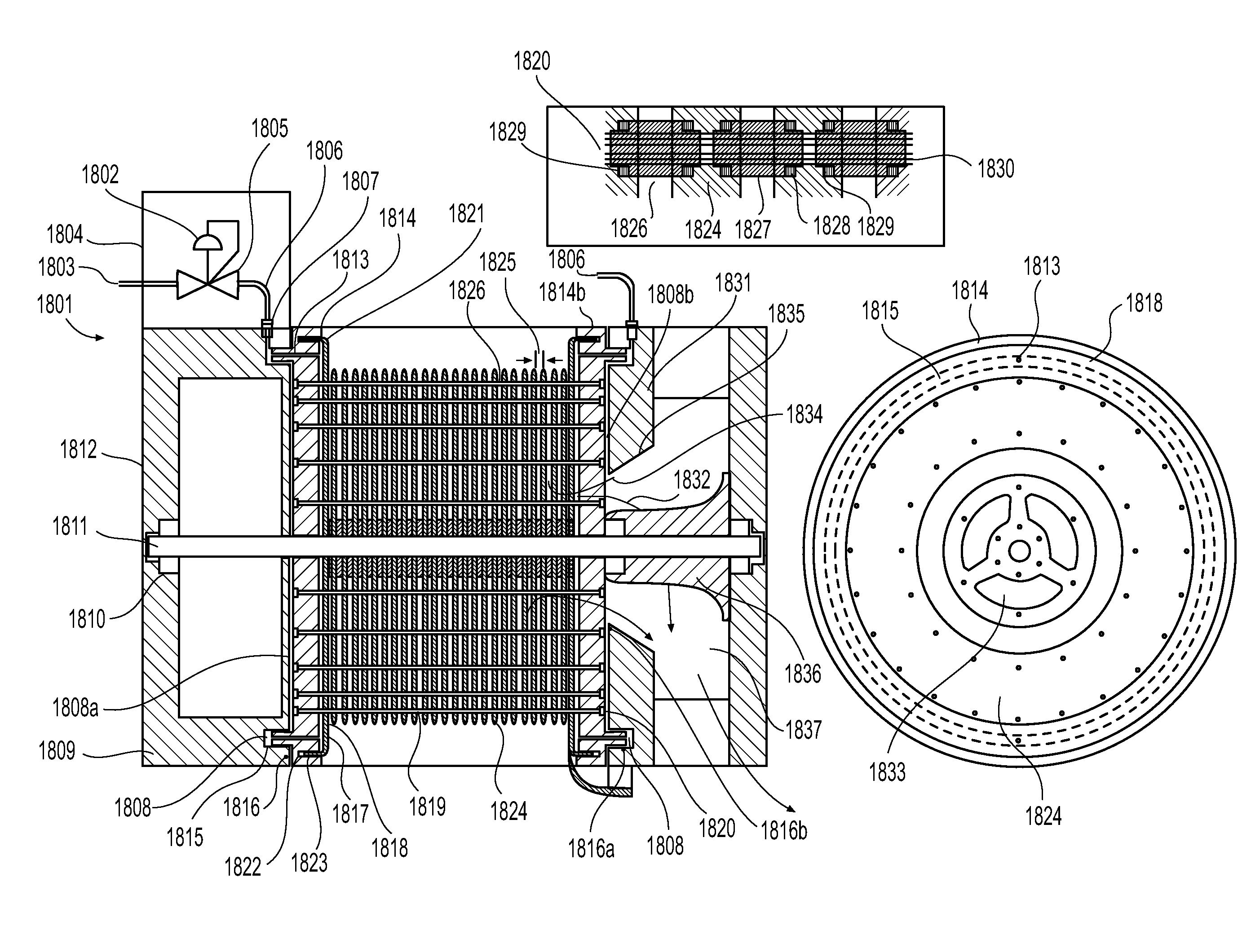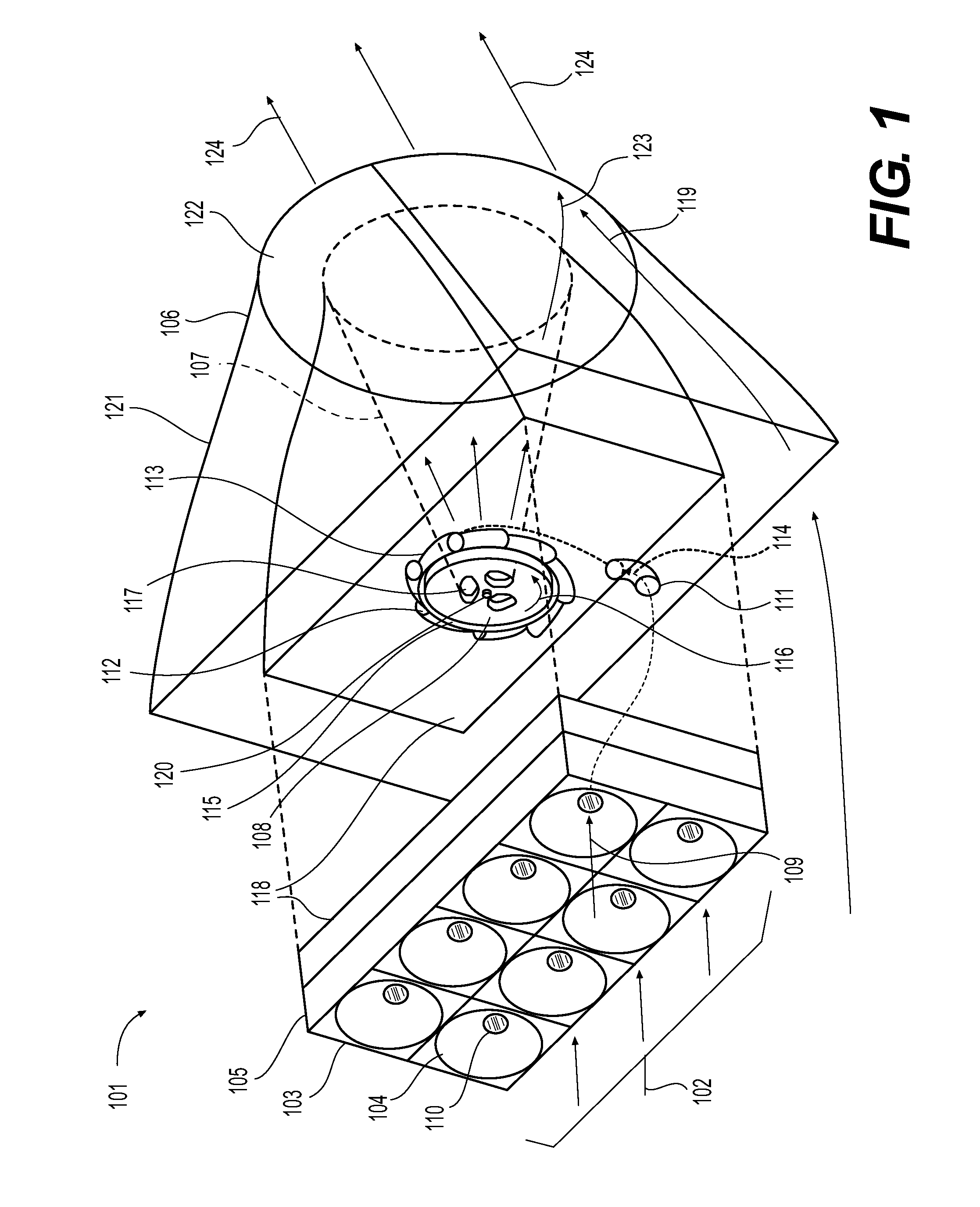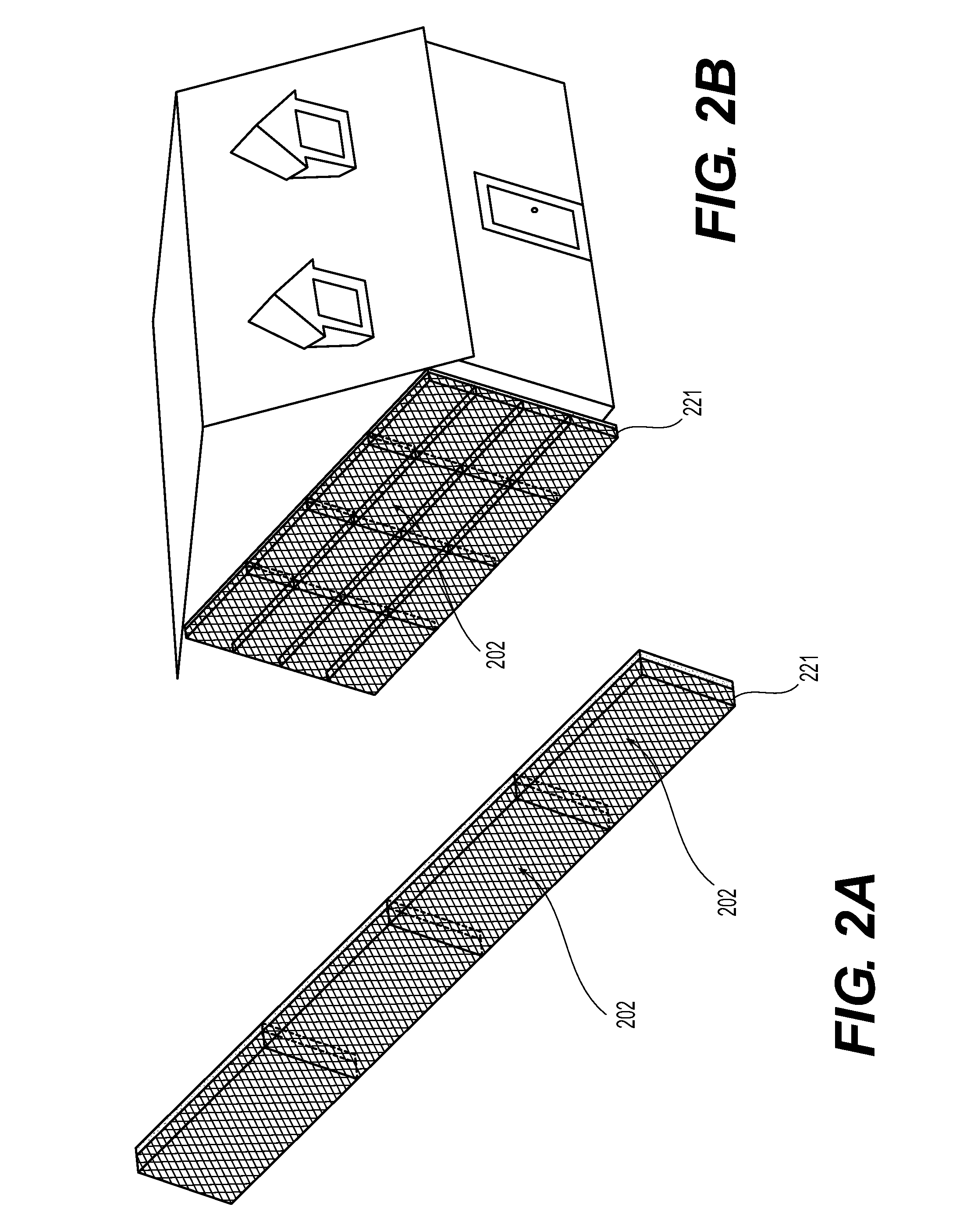System and method for extracting power from fluid using a Tesla-type bladeless turbine
a technology of bladeless turbines and fluids, applied in the direction of liquid fuel engines, renewable energy generation, greenhouse gas reduction, etc., to achieve optimal longitudinal spacing, minimize losses, and increase efficiency
- Summary
- Abstract
- Description
- Claims
- Application Information
AI Technical Summary
Benefits of technology
Problems solved by technology
Method used
Image
Examples
embodiment 401
[0176]Meanwhile, wind entering into first convergent section of external shroud 406 and following the path indicated by arrows 420, upon reaching the divergent section 462 of shroud 406 is directed away from the axis of discharge by diverging profile and upon doing so generates a high velocity discharge stream 425 acting to entrain the internal turbine exhaust stream at 440, placing the discharge air 430 from the divergent section of the disc-turbine exhaust channel 409 substantially within divergent section 462, thereby beneficiating the differential pressure across the disc-turbine systems embodiment 401, the speed of its shaft 471 rotation, and the resultant electrical work output realized from its co-rotating alternator. As shown, post-entrainment of the turbine exhaust stream into the high velocity diverging low-pressure fluid extraction device shroud flow, the total air-stream 441 resumes traveling with the local wind-mass at a speed substantially the same as the native wind, ...
embodiment 701
[0185]As indicated in the figure, embodiment 701 disposed in the path of ambient fluid currents 702 permits fluid flows 706 and 704 to enter into convergent upper and lower fluid collection devices (FCD) 705 and 703, and also permits fluid flow externally around device 721. Choosing flow 706 in FCD 705 first, ambient fluid 702 may be driven between converging upper and lower surfaces of FCD 705 laterally bounded by fluid inlet wall 709 developing a combined EVFES 710 as flow 706 merges toward the smaller end of FCD 705, with said EVFES 710 thus developed either passing via involute fluid inlet(s) 711 unto tangency and entry there-into work extracting disc turbines 712, or alternately passing through ‘blow-through slots’720 comprising openings to produce discharge flows 719.
[0186]The disc turbines 712 have isolation end plates 713 secured and having central hole(s) matching disc turbine axial discharge hole(s) pattern. Isolation end plates 713 isolate the fluid flow within the volute...
embodiment 1101
[0200]As shown in the figure, embodiment 1101 integrates the invention concept into the shell of a building aligned so as to intersect the mean wind-flow pattern through the region. Ambient wind currents 1102 intersected by the large building face surfaces 1104 though inclining nevertheless represent a very large surface area disposed to the vector of said fluid currents' approach and thereby develop into an EVFES 1103. EVFES 1103, driven substantially along the azimuth of the ambient wind vector unto tangency with work extracting disc turbines 1106 mounted for rotation at the mouth of involute fluid inlet(s), or volute(s), integrated into the shell of said building face 1104 may develop initial rotation of said disc turbine(s). Medians 1105 may serve to direct added working fluid to each involute fluid inlet so as to guide EVFES arriving from alternate azimuths into alignment disc turbines. EVFES not entering turbine(s) 1106 and driven over the roof-top to become fluid extraction d...
PUM
 Login to View More
Login to View More Abstract
Description
Claims
Application Information
 Login to View More
Login to View More - R&D
- Intellectual Property
- Life Sciences
- Materials
- Tech Scout
- Unparalleled Data Quality
- Higher Quality Content
- 60% Fewer Hallucinations
Browse by: Latest US Patents, China's latest patents, Technical Efficacy Thesaurus, Application Domain, Technology Topic, Popular Technical Reports.
© 2025 PatSnap. All rights reserved.Legal|Privacy policy|Modern Slavery Act Transparency Statement|Sitemap|About US| Contact US: help@patsnap.com



